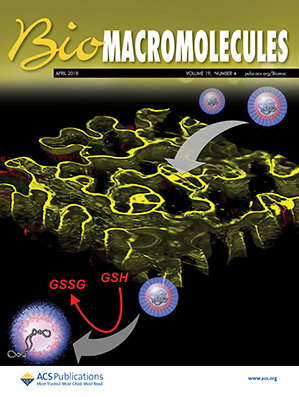聚甘油和二甲基亚砜对蜱虫长期低温保存的协同作用。
IF 5.4
2区 化学
Q1 BIOCHEMISTRY & MOLECULAR BIOLOGY
引用次数: 0
摘要
在此,我们提出了使用线性聚甘油(linPG)和二甲基亚砜(DMSO)的组合对微藻stihococcus物种进行长期冷冻保存技术的重大进展。该技术对三种Stichococcus进行了测试:杆菌性Stichococcus bacillus, deasonii性Stichococcus and minor性Stichococcus minor,显示出长期生存能力和回收率优于仅用传统冷冻保护剂处理的那些。虽然DMSO在低温保存1周后使所有物种的细胞恢复率很高,但在低温保存26周后,某些物种的细胞恢复率降至50%以下。用linPG和DMSO联合处理细胞,在长期冷冻保存后,三种stihococcus的回收率均达到92%以上。我们的研究结果表明,linPG与DMSO的结合为微藻长期低温保存过程中维持细胞完整性和功能提供了一种协同有效的解决方案。本文章由计算机程序翻译,如有差异,请以英文原文为准。
Synergistic Effect of Polyglycerol and DMSO for Long-Term Cryopreservation of Stichococcus Species
Herein, we present a significant advancement in long-term cryopreservation techniques for microalgae Stichococcus species using a combination of linear polyglycerol (linPG) and dimethyl sulfoxide (DMSO). The technique was tested on three Stichococcus species: Stichococcus bacillaris, Stichococcus deasonii, and Stichococcus minor, which showed long-term viability and recovery rates superior to those when treated with a traditional cryoprotectant only. While DMSO alone enabled high cell recovery rates for all species after 1 week of cryopreservation, the rates for some of them dropped below 50% after 26 weeks of cryopreservation. Treating the cells with a combination of linPG and DMSO raised the recovery rates for all three Stichococcus species to above 92% after long-term cryopreservation. Our findings indicate that linPG in combination with DMSO offers a synergistic and effective solution for maintaining cell integrity and functionality during long-term cryopreservation of microalgae.
- Download: Download high-res image (141KB)
- Download: Download full-size image
求助全文
通过发布文献求助,成功后即可免费获取论文全文。
去求助
来源期刊

Biomacromolecules
化学-高分子科学
CiteScore
10.60
自引率
4.80%
发文量
417
审稿时长
1.6 months
期刊介绍:
Biomacromolecules is a leading forum for the dissemination of cutting-edge research at the interface of polymer science and biology. Submissions to Biomacromolecules should contain strong elements of innovation in terms of macromolecular design, synthesis and characterization, or in the application of polymer materials to biology and medicine.
Topics covered by Biomacromolecules include, but are not exclusively limited to: sustainable polymers, polymers based on natural and renewable resources, degradable polymers, polymer conjugates, polymeric drugs, polymers in biocatalysis, biomacromolecular assembly, biomimetic polymers, polymer-biomineral hybrids, biomimetic-polymer processing, polymer recycling, bioactive polymer surfaces, original polymer design for biomedical applications such as immunotherapy, drug delivery, gene delivery, antimicrobial applications, diagnostic imaging and biosensing, polymers in tissue engineering and regenerative medicine, polymeric scaffolds and hydrogels for cell culture and delivery.
 求助内容:
求助内容: 应助结果提醒方式:
应助结果提醒方式:


